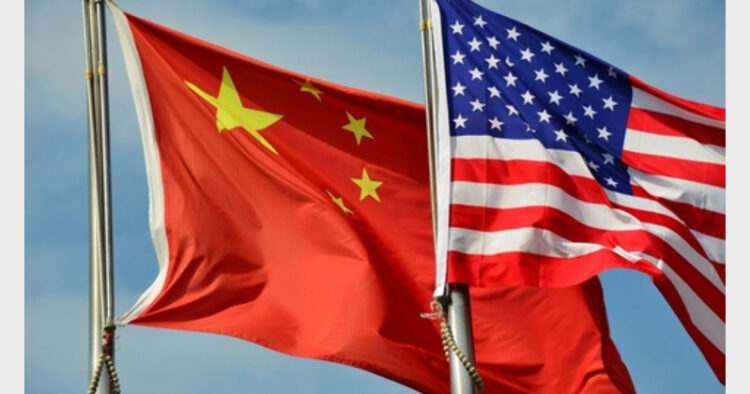The Chinese might have signalled that its rivalry with the United States will shift to another landscape, where each would be striving with the other to become a leader in the field of green energy and thus become the ‘savior’.
The COP 26 has got some glitters as the world’s two biggest emitters; the United States and China have issued a joint statement in which they agreed to cooperate in combating climate change. The Chinese climate envoy and his American counterpart have finally found the same ground after painstaking negotiations spanning 30 meetings. The Chinese envoy Xie Zhenhua acknowledged the threat that climate change posed by affirming that cooperation between the two powers was necessary.
China, under the agreement, has pledged to phase down coal and other fossil fuels from 2026 and has also vowed to form a national plan for curbing methane emissions, distancing itself from the hundred countries which have pledged together to curb methane emissions by 30% by the year 2030. However, the Asian giant could not confirm the time at which its emissions would peak.
Though Xi Jinping didn’t attend the conference in person, the agreement signals his willingness to act, which hasn’t come long after the earlier announcement that China would cease further funding of overseas fossil-fuel projects. Energy quotas have been enforced, with factories in China who finish their yearly quota early getting their supply cut. But the thing which demands attention is the nature of his willingness.
The Chinese government has recognized the renewable energy sector as a ‘strategic emerging industry’, which seems an important categorization. China is touted to be the world’s largest producer of wind and solar energy. It is considered to have the capacity to manufacture wind turbines twice as the USA can produce. It also boasts a significant proportion of the world’s solar generation capacity. But these big facts owe their size to the huge domestic consumption, which is a characteristic of the country. If one takes up China’s overseas investment in green energy, it is eclipsed by those in fossil fuels.
China’s rise has been facilitated by its economic strength, and a big chunk of its money overseas was directed towards the energy sector. In all the continents of the world, ranging from Latin America to Oceania, billions of dollars of investment have been invested by the Chinese in fossil fuels. This policy was based on the need to maintain energy security, fulfil the needs emanating from its consumption, and augment its influence abroad, enabling the dragon to stand at par with the United States. Chinese money forms an integral part of them, be it gas pipelines in Russia, oilfields in the Middle East, coalfields in Indonesia, or offshore natural gas fields of Mozambique.
But this large size of the investment can also cause some problems since most of these were realized in the 2010s and have been responsible for large quantities of emissions, making China an emitter and a facilitator of emissions around the world. The speed of Chinese investment isn’t stopping, and fossil fuel projects are still in contention for the years to come. They are the last, but what makes them worrisome is their number.
But the tables have to be turned. The world is changing. Humankind has started picking up its scatter and has started building a world dominated by other energy sources. The funding of fossil fuels isn’t sustainable, and it’s a veritable fact. China knows that it isn’t good to stick out as a thorn when others are trying to become scented flowers. The revolution realized in the global energy sector provides China with an opportunity to maintain its clout. If others demand green energy, it won’t hesitate in being the first to provide it in affordable terms.
Thus, in a few years, there may be an increment in Chinese investment in green energy in different parts of the world. China might also aid developing countries to help them tackle climate change, thereby showing to the disgruntled developing world that they can count on it instead of the West, which doesn’t show fidelity on such a crucial matter lagging in providing the much-needed cash. The Chinese provided $14 million in aid to Dominica after Hurricane Maria, which was more than what was provided by Washington. And one can say that if they could support fossil fuel projects in such a short time, why would they lag in renewable energy if it benefits them in the long run?
This gives rise to an important point: Is the joint agreement a sign of cooperation or a signal for further competition? In the garb of cooperation, the Chinese might have signalled that its rivalry with the United States will shift to another landscape, where each would be striving with the other to become a leader in the field of green energy and thus become the ‘savior’. The US doesn’t maintain complete goodwill with the Chinese, which is evident from the fact that around the same time when the joint statement was in the climax, some US lawmakers visited Taiwan, not to forget that patrolling and naval exercises by the West in the Indo-Pacific region seem to have become a regular feature, which unsurprisingly draws ire form Beijing. Both are different issues, but the focal point is power and influence, which means that the rivalry between the two sides isn’t going to fizzle but is slowly conditioning itself for the future.














Comments